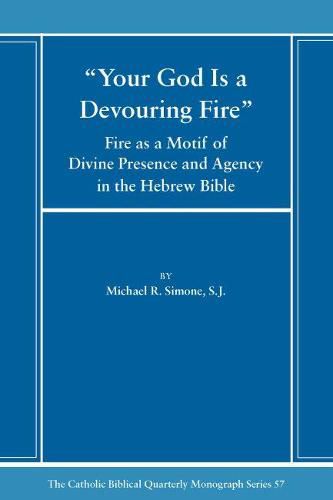Readings Newsletter
Become a Readings Member to make your shopping experience even easier.
Sign in or sign up for free!
You’re not far away from qualifying for FREE standard shipping within Australia
You’ve qualified for FREE standard shipping within Australia
The cart is loading…






In the ancient Near East, the distinction between the divine realm and the material world was not always clear. In Mesopotamia, statues, kings, and even cultic utensils could become gods in their own right.
Certain biblical traditions show this idea as well. Yhwh appears as a human during visitations to Abraham and Jacob (Gen 18:1-2 and 32:25-31). Yhwh also can act through objects (Gen 15:17; 1 Sam 5:1-5). This suggests that, in Israel as in Mesopotamia, a distinction between humans and gods was one of status more than ontology. Throughout the ancient Near East, religious literature included motifs that emphasized divine status, such as power, size, wonder-working ability, and the possession of numinous qualities.
In Israel, these divine status symbols were frequently storm motifs like cloud, precipitation, and fire. Fire was one of the most common, perhaps because, being vivid and powerful, it shared Yhwh’s life-giving, transformative, yet dangerous qualities. In certain narratives, fiery motifs accompany an embodied divine presence. At other times, fiery phenomena are the sole perceptible indications of divine presence. As a motif of divinity, fire can symbolize divine agency even functioning at a distance from Yhwh or shared with a secondary agent like an angel, tool, or weapon. Israel’s extensive use of fire in the cult gives witness to similar traditions. Divine fire accompanies each new cultic inauguration in the Hebrew Bible. A tradition in Leviticus suggests that this fire remained continuously burning and served as a gate that allowed God to received portions of the cultic offering.
In the Hebrew Bible, fire was thus a status symbol of divinity, drawn from traditional storm motifs and ancient conventions of divine embodiment. In its vivid ethereal appearance and power to give, transform, and take life, it symbolized the presence and agency of Yhwh, the God of Israel.
$9.00 standard shipping within Australia
FREE standard shipping within Australia for orders over $100.00
Express & International shipping calculated at checkout
In the ancient Near East, the distinction between the divine realm and the material world was not always clear. In Mesopotamia, statues, kings, and even cultic utensils could become gods in their own right.
Certain biblical traditions show this idea as well. Yhwh appears as a human during visitations to Abraham and Jacob (Gen 18:1-2 and 32:25-31). Yhwh also can act through objects (Gen 15:17; 1 Sam 5:1-5). This suggests that, in Israel as in Mesopotamia, a distinction between humans and gods was one of status more than ontology. Throughout the ancient Near East, religious literature included motifs that emphasized divine status, such as power, size, wonder-working ability, and the possession of numinous qualities.
In Israel, these divine status symbols were frequently storm motifs like cloud, precipitation, and fire. Fire was one of the most common, perhaps because, being vivid and powerful, it shared Yhwh’s life-giving, transformative, yet dangerous qualities. In certain narratives, fiery motifs accompany an embodied divine presence. At other times, fiery phenomena are the sole perceptible indications of divine presence. As a motif of divinity, fire can symbolize divine agency even functioning at a distance from Yhwh or shared with a secondary agent like an angel, tool, or weapon. Israel’s extensive use of fire in the cult gives witness to similar traditions. Divine fire accompanies each new cultic inauguration in the Hebrew Bible. A tradition in Leviticus suggests that this fire remained continuously burning and served as a gate that allowed God to received portions of the cultic offering.
In the Hebrew Bible, fire was thus a status symbol of divinity, drawn from traditional storm motifs and ancient conventions of divine embodiment. In its vivid ethereal appearance and power to give, transform, and take life, it symbolized the presence and agency of Yhwh, the God of Israel.